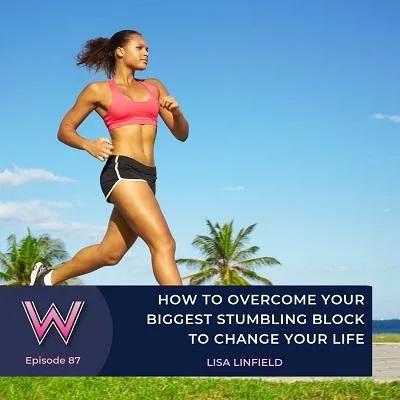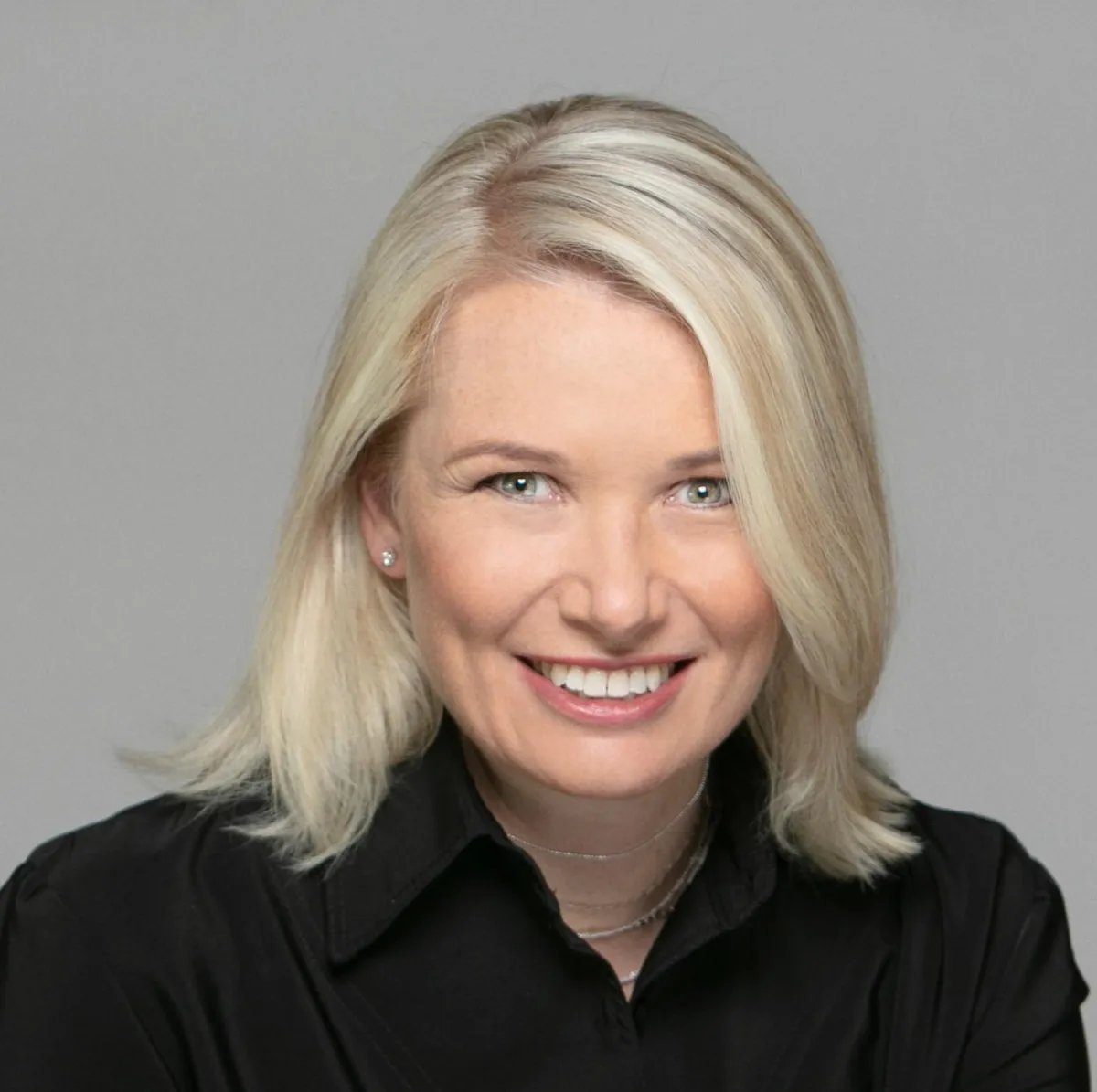Browse for the latest episode of...
working women's wealth

87 How to overcome your biggest stumbling block to change your life
We are often inspired to act on something GREAT that we experienced. Then life throws us a curve ball and we are back where we started. One of my personal stumbling blocks is understanding (and following through) what I need to do to live MY best life.
The internal fight is REAL. And what makes it worse is that we are so harsh on ourselves. You may know that I am an avid researcher. The brain fascinates me! In my last interview with Dr Abby Metcalf, we unpack what it means for the unconscious brain to process information at 11 million bits per second. Can you imagine?
Our identities are moulded long before our reasoning and rationality. So, how do we override our reptilian brain and unconscious thinking? And how can we change our self-sabotaging behaviour?
I’m on a quest to change my behaviour and evolve my identity. And I invite you to join me because it starts with simply saying, “I AM…”
Show notes
What makes us to stick to our goals, resolutions and dreams?
We are inspired to act on something great but life happens that throws a curve ball and we are back where we started.
We beat ourselves up for our failures and we just stop trying.
Understand how your brain functions.
Primitive brain - basic reptilian response to survival.
Pre-frontal cortex - conceptual talents reasoning abilities and good judgment.
The battle of the brain (parts) - flight, fright or freeze!
How do we override our reptilian brain and unconscious thinking? Or how can we change our self-sabotaging behaviour?
Identities are built around many concepts, dynamics and constructs. It is shaped long before your frontal-cortex has matured.
Consequently, our (subconscious) thinking determines our behaviour.
I explain the practical steps to change your behaviour and evolve your identity.
It starts with a simple ‘identity savings’, accountability partners and little bit of (financial) sacrifice.
It takes 66 days to build a good habit! And it all starts with “I AM”.
The biggest stumbling block to changing your life – and how to overcome it.
One of my many frustrations with myself is knowing what I need to do to live my best life, but not doing it.
It drives me completely nuts.
I know I need to give up sugar – that I’m totally addicted to it, and that it’s seriously bad for me. I’m fine throughout the day, but I seem to lose it at night.
I know I need to wake up early and exercise every day. But when that alarm goes off, I struggle every single morning with myself. The fight is SERIOUSLY real!
So I’ve always been really interested in answering the question – what makes us stick to our ‘new years resolutions’? And I don’t mean only those ones we make on New Years day… It’s also the resolutions we make after we hear an inspiring speaker who motivates us to change our ways.
· We’re fired up. We know WHY we need to do it. We know WHAT we need to do. And for a few days or even weeks, we get it done. Whilst we are doing it, we feel energised, motivated, and full of hope.
And then Life Happens.
And we end up where we started before the resolution.
In fact, we end up worse off.
The reason being is that we just chipped away a little weeny bit more at our self-esteem.
Either because we re-enforced our sub conscious beliefs or because we actually ended up beating ourselves up in our head for being a failure.
· See, you can’t stick to daily exercise.
· See, you’re useless. You can’t even give up sugar when you KNOW how bad it makes you feel.
For some of us it’s our health, and for some its our wealth, and for others it’s making daily sales calls. For many small business owners, it’s working on our businesses not in our businesses – because we really love our craft and so like working in our businesses, but we hate the sales and marketing. For many at work, it’s putting boundaries in place to say NO.
So because I struggle with it so much in myself, it’s a question I ask so many of my podcast guests… and something I read up about a lot.
Over the last few weeks, I’ve had an epiphany on the matter that I wanted to share with you.
And it starts with understanding how our brains work.
As an analyst and a scientist, I find it far easier to do things if I understand why something happens, and then that will give me a model that helps my sort out my thoughts as to how I can change it. After that, I need a step-by-step plan to implement.
So the first step is to understand WHY we don’t make the changes we know we need to make.
And it turns out, it comes to the workings of the physical brain.
The thing we have in common with most animals is our primitive brain. It’s the lower part of our brain that helps us to function basically.
· Our breathing, our need to eat, our need to reproduce as a species, and our safety and protection.
· Many of the functions we have there are common even to reptiles… who breathe, reproduce, and have an instinct to protect themselves, fight or flight.
The biggest thing that separates us from other animals is that we have the upper part of our brain, the logical, rational and more advanced part of our brain.
· It’s got amazing conceptual talents, where we can move from the physical things of what we see and hear to designing things that don’t exist currently, like a new life for ourselves – or inventing a smart phone, or a car.
· It’s also logical and can make sense of a world and analyse stuff.
· And research shows us that it’s the part most adults think with, especially the pre-frontal cortex. This is the part that responds with good judgement. The problem is, it’s only fully developed at the age of 25…and before then we rely on the primitive part of our brain to do most of our processing function.
So what happens to us is that there is a constant battle of the upper brain and the lower brain. The upper brain that tells us of a new life, a new way of being, that creates that vision of who we could be, of how we could change our life for the better.
And the lower brain that protects us from things that are hard; that uses animal instinct fear to keep us in our territory of safety and security. That has a built in center that causes us to fight and flee from the unknown. That always assumes that ‘out there’ is a threat, and out there is territory that belongs to someone else. Territory that couldn’t and shouldn’t be ours.
And then we come to the subconscious. It’s like the computer’s operating system – such a hugely important part of the ‘brain’ of the computer, but the part none of us see except to know there’s an update for it we need to install that’s usually hundreds of megs big and we need to be connected to wifi!
This brain is a remarkable piece of kit we have. As we were learning with Dr Abby Metcalf in last week’s episode, the conscious brain can process at 50 bits per second, and the subconscious brain can process at 11 million bits per second.
So here’s the question… which one do you think is more powerful? 50 or 11 million?
It’s no contest. Clearly, it’s the 11 million version – the sub conscious brain.
And in the sub conscious brain, that’s where our sense of who we are, our identity sits. And a large part of identity can be expressed in two two-word statements – I AM, and I CAN… and then their opposites… I AM NOT or I CAN’T
Now identity is also a crazy concept. Because it is formed from so many different pieces of information. What our parents said to us, what the bully on the playground told us, what we saw around us in society, what we felt in the dynamics of the family, what our 6 your old self told us.
So much of our identity is formed before we were 25 – before we had a fully formed upper rational brain to logically argue it out with that primitive brain… and so we accepted as fact that child-like interpretation of the words that nasty girl on the play grounds said about us.
As I watch my 12 year old navigate life right now, I see these little monsters say things to her I know they don’t mean – they say nasty things to elevate themselves in the group as they all jockey to be accepted by the bully… most often the most broken of girls.
And so as I learn about all of this, I wonder how much of my sub conscious operating system is so deeply flawed and the “facts” of a child’s world.
So let’s bring this all together to answer the question – why can’t we change our behaviour? – and to do the second step of looking at a model that will ensure we can change out behaviour
To do that, let me tell you about the epiphany I had when talking to Dr. Kelly Donahue, next week’s guest, in our pre-interview preparation session.
I’ve been exercising twice a week for 7 years now, since I started paying for a personal trainer to hold me accountable. I always say, if you want to change something, or get something done, you need to do two things – get an accountability partner, and invest money that slightly hurts your pocket - enough to ensure you won’t quit.
So my question to you is, if you met a person who exercised every single week for 7 years, would you say that they are a consistent, regular exerciser?
Most people would answer yes.
The challenge is, I would NEVER in a million years say that I am a consistent, regular exerciser.
You see, for most of my formative life, I could never stick consistently to exercising. I would start for 3 or 4 weeks, and give it up. Yes, I’d rock up for team things… but to me that was playing a sport, not exercising.
I also would never say I exercised regularly. Because somewhere at Med School, a regular exerciser was defined as a person who did more than 4 sessions of exercise – and back then, we believed that that was what you needed in order to be healthy.
So my subconscious identity when it came to exercise was as a LOSER. Remember the two phrases of identity – I AM and I CAN and their terrible opposites? For me my identity when it came to exercise was
· I CAN’T get myself to exercise consistently
· I AM NOT a regular exerciser.
· And I’m definitely NOT self-motivated. Yes, I played team sports my whole life (more about the fitting in and belonging to a team than the sport itself)
That identity, Together with the story that if you weren’t doing team sport, the only reason you would exercise was to loose weight while you diet, meant that my 11 million bits of thoughts were stacked against me.
In so many of my interviews in the last month, the concept that our THINKING determines our BEHAVIOUR has featured – whether it be our behaviour at work with Alan Cohen, Christmas Hutchinson or Tammy Gooler Loeb, or our behaviour in our personal relationships with Dr Abby Medcalf or next week with Dr Kelly Donahue…
So I got to thinking about the fact that as our sub-conscious thinks at 11 million bits, and our conscious at only 50, that so much of our thinking that drives our behaviour must come from our sub conscious… and so much of that from our identity statements of I Can and I can’t.
And then I had the A-Ha moment.
For the last 7 years, I’ve fought with myself before EVERY SINGLE gym session. Should I, Shouldn’t I… and I’ve reluctantly gone mumbling and grumbling to myself BECAUSE I pay the money whether I do or don’t show up.
And the reason for the mental fight , as tiring as it is, is that fundamentally the 11 million bits of sub conscious are telling me that I am NOT a regular, consistent, self-motivated exerciser… and that I wasn’t on diet, and wasn’t interested in losing weight, so I should NOT be doing this exercise thing.
Needless to say the 50 bits that were telling me that I should exercise because I’m committed to my long term health and strength as I want to be strong enough to play with my grandchildren when they come in 20 years – and those poor 50 bits of logic were fighting a losing battle.
Fortuneately for 7 years, my money brain over-rode all this chaos. I was NOT going to waste the money I paid monthly. Full stop. Shut up all of you.
And it struck me that the key to the model to change your behaviour lay in the power of identity… and why it is that we can’t will ourselves with as much logic and good plans into changing.
The A-Ha moment was understanding that identity, how I saw myself, the statements I believed so deeply about myself was the key element in whether I could successfully install new habits, change my life for the better.
And so the step by step plan to change behaviour would need to be
1. Identify the behaviour you want to change
2. Look at what the underlying I AM and I CAN beliefs (or their opposites) that’s underlying this behaviour
3. Identify what those I AM and I CAN beliefs need to be to change
Begin the simultaneous process of
4. Implementing the change you need – through sheer commitment to the change (and ride the motivation wave OR, more successfully, getting an accountability coach that you need to pay for
5. Making sure you change your identity through repeating your identity statements
So in the identify steps, You have to first ask yourself what am I believing that’s in opposition to what I want to achieve
a. I’ve always wanted to achieve consistent, regular exercise
b. I’ve always believed that I’m not a consistent, regular exercises
c. So if my thoughts become my behaviour, I’m never going to do consistent, regular exercise.
And in the implementation steps, you need to regularly say your short, quick I AM or I CAN statements as many times a day as humanly possible
d. I implemented a regular set of I AM statements
i. I AM a regular exerciser
ii. I AM a consistent exerciser
iii. And when I wanted to land daily, self-generated exercise without the money argument of a trainer, I AM a daily exerciser
e. An amazing thing happened. The quality of my hour with my trainer changed. For the first time I wasn’t sub-consciously fighting every exercise and trying to do as little as possible… I started to squat deeper, plank flatter, put more effort into it. I wasn’t self-sabotaging it.
f. I also found an interesting thing.
i. I tend to have an all or nothing view to my identity. I learnt this when going through therapy with my daughter when she was 6 years old. When the therapist asked her to say good I AM statements, she could hardly come up with any of them. So I said “Jess is kind”. No mama , I’m not. Why? Asked the therapist? Because yesterday I was nasty to my sisters. So I asked her, “do you think mama is kind?” and she said “yes!”, so I said… but Jess, yesterday mama was tired, and was nasty to dada. Does that make her not kind? “No mama”
ii. It was then I realised how much grace we give others in our opinion of themselves, and how hard and all-or-nothing we are to ourselves.
g. So, in order to truly believe deeply. I had to work with this all or nothing harshness in myself. So I decided that if a pass was 50%, and more than half the time I did something, I had to concede that I had passed that character trait.
i. You see, I could begin to believe the two statements of I AM a regular exerciser and I AM a consistent exerciser, but I just felt everything in me FIGHT the I AM a daily exerciser when I was starting to implement the habit of daily exercise
ii. So I used pure willpower to start off with on the daily exercise thing… and each time I did it, I jotted it down in my diary.
iii. And then each day and week I did a score of number of times I should exercise vs number of times I did.
iv. In the first month, I scored 25/29 or 86%. So whilst I can still feel myself argue with myself, I now feel my identity shifting to more deeply believe I AM a daily exerciser
h. So the magical shift becomes – using the tough willpower to start the behaviour, but then the momentum of the change in identity to keep it going.
Your identity not going to change immediately, but as Robin Sharma in his book, the 5am club, says, it takes 66 days to create a habit.
So I’ve committed to 66 days of willpower based daily exercise, and with it, 66 days of saying “I AM a daily exerciser”, I AM an early riser… and at day 36, I’m 32/36 for exercising and 30/36 for early rising. And it’s getting easier and easier to deeply believe it, and to start finding ways to make sure that even if I miss a 5am slot, that I still find a time to do 20 minutes of exercise that day… and not throw in the towel and give up on the 5am thing.
So if you truly want to become something, you need to change your identity. If you want to have a successful side hustle, you need to change the statement in your head from I AM NOT an entrepreneur, I AM an employee or I AM Never going to have a successful business… to I AM a business owner.
If you’re always telling yourself – I’m not good enough, not kind enough, not smart enough… start by saying I AM enough. That’s it.
Short, sharp Identity Sayings.
If you want to change your life, you need to change your identity.
Related articles
If you enjoyed this podcast, you will enjoy setting your intention with Dr Abby Medcalf, serving two masters, corporate resilience with Christmas Hutchinson, and radical step-change.
Download this podcast
Right click on the link here and click ‘save as’ to download this episode to your computer.
Subscribe to our podcast on iTunes or Spotify
Please do Subscribe to our Podcast on iTunes or Spotify and leave a review. This helps the podcast to rank higher and therefore makes it more visible to others browsing podcasts in the hope they too may benefit from our content.
Get my book - Deep Grooves: Overcoming Patterns that Keep you Stuck
You can get the first two chapters of my book FREE here
If you want a paperback copy and you’re in South Africa, visit my site LisaLinfield.com
If you want a Kindle copy or a paperback anywhere in the world, visit Amazon

Explore
On Social
YourBrand.com - All Rights Reserved - Terms & Conditions

